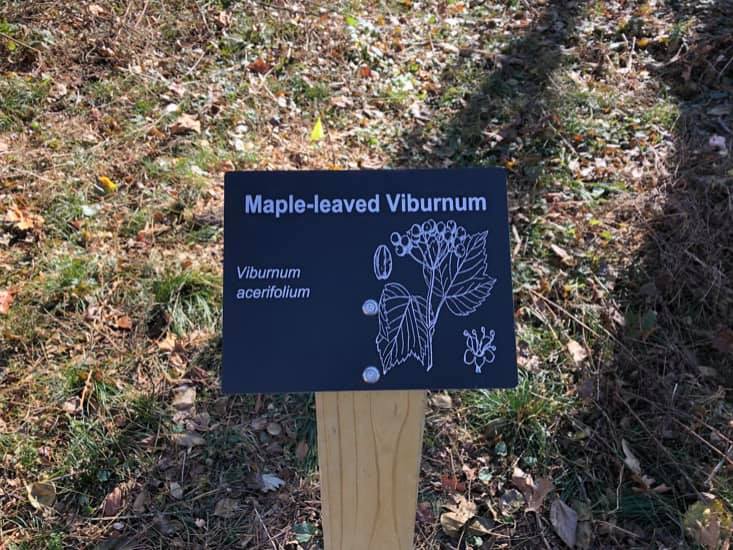Self-Guided Tree and Shrub Trail
Your browser does not support viewing this document. Click here to download the document.
|
As you are walking look for the labeled trees and shrubs that have a QR code on the sign.
Twenty eight of the 73 trees and shrub labels have a QR code. The signs with QR codes are listed below and locations can be found on the map.
Bald Cypress (Taxodium distichum) Black Walnut (Juglans nigra) Bur Oak (Quercus macrocarpa) Catalpa (Catalpa bignoniodes) Common Hackberry (Celtis occidentalis) Eastern Cottonwood (Populus deltoides) Gray Dogwood (Cornus racemosa) High-bush Cranberry (Viburnum trilobum) Musclewood Tree (Carpinus caroliniana) Ninebark (Physocarpus opulifolius) Ohio Buckeye (Aesculus glabra) Osage Orange (Maclura pomifera) Pecan (Carya illinoinensis) Persimmon (Diospyros virginiana) Red Maple (Acer rubrum) Red Oak (Quercus rubra) Redbud (Cercis canadensis) River Birch (Betula nigra) Sassafras (Sassafras albidum) Shagbark Hickory (Carya ovata) Spicebush (Lindera benzoin) Sugar Maple (Acer saccharum) Sweet Gum (Liquidambar styraciflua) Sycamore (Platanus occidentalis) Tulip Poplar (Liriodendron tulipifera) White Oak (Quercus alba) Wild Black Cherry (Prunus serotina) Wild Sweet Crab Apple (Malus coronaria) |
A variety of trees and shrubs help to make up the 4 layers of a deciduous forest.
All of the labeled trees and shrubs are native to Illinois.
A native plant is a plant that have occurred naturally in a geographical area.
**Disclaimer**
Some of the fun facts include medical remedies that were used in the past. These are for fun only! DO NOT try them at home. Also, NEVER try to identify a plant yourself or GUESS identification. DO NOT eat any part of the plant. Collecting is NOT allowed on the D-HNC grounds.
A native plant is a plant that have occurred naturally in a geographical area.
**Disclaimer**
Some of the fun facts include medical remedies that were used in the past. These are for fun only! DO NOT try them at home. Also, NEVER try to identify a plant yourself or GUESS identification. DO NOT eat any part of the plant. Collecting is NOT allowed on the D-HNC grounds.
